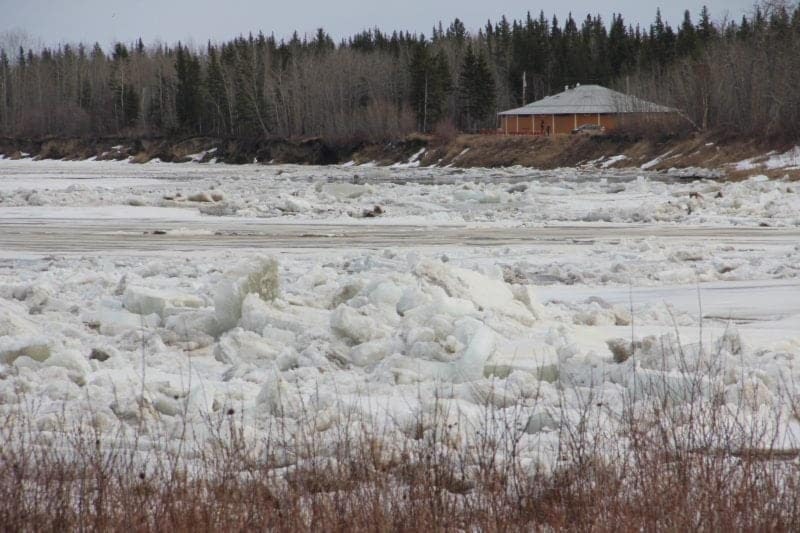A precautionary boil-water advisory in Hay River and area was lifted about noon on May 22.
The advisory was issued on May 17, meaning it was in place for a relatively short five days.
The precautionary warning was for Hay River, K'atlodeeche First Nation, Enterprise and Kakisa residents who receive their water from the Town of Hay River water supplier.
Ice flows down the Hay River during spring breakup early this month.
They were asked to boil their water for a minute due to higher than normal turbidity, or muddy water, in the supply taken from Great Slave Lake.
The Town of Hay River and Peter Workman, the GNWT's chief environmental health officer, observed that the turbidity levels had dropped to acceptable levels in treated water from the water plant before lifting the advisory.
No illnesses associated with drinking water were reported during the time of the advisory.
Workman had no explanation why there was such muddy water this year – resulting in the first boil-water advisory since 2011 – after a relatively uneventful breakup of the Hay River.
"Unfortunately, I couldn't tell you what specifically about the breakup stirred up the sediment to create the issue," he said. "Some years are worse than others is all I can say."
Workman said high turbidity doesn't happen every year in every community, but there are periods because of spring breakup when there is turbidity in some water treatment plants, and sometimes it gets to a point where a precautionary advisory is needed because turbidity interferes with disinfection.
"If we receive information that there's a turbidity issue, we want to make sure your water is safe, and the easiest way to do that is to say you should boil it for these few days until such time as the turbidity clears," he said.
Hay River's drinking water is taken from Great Slave Lake through an intake pipe about seven kilometres out into the lake.
Aside from this year, the most recent boil-water advisories were issued in 2007, 2008, 2009 and 2011.
